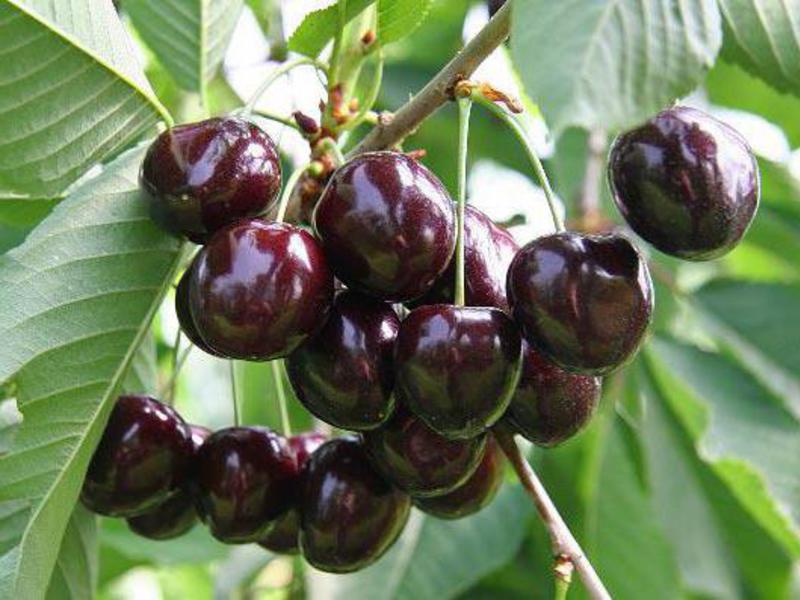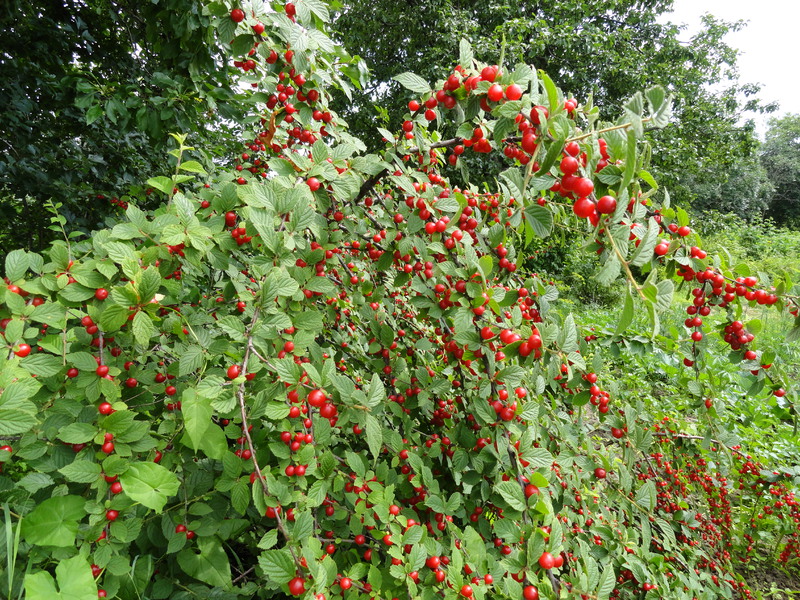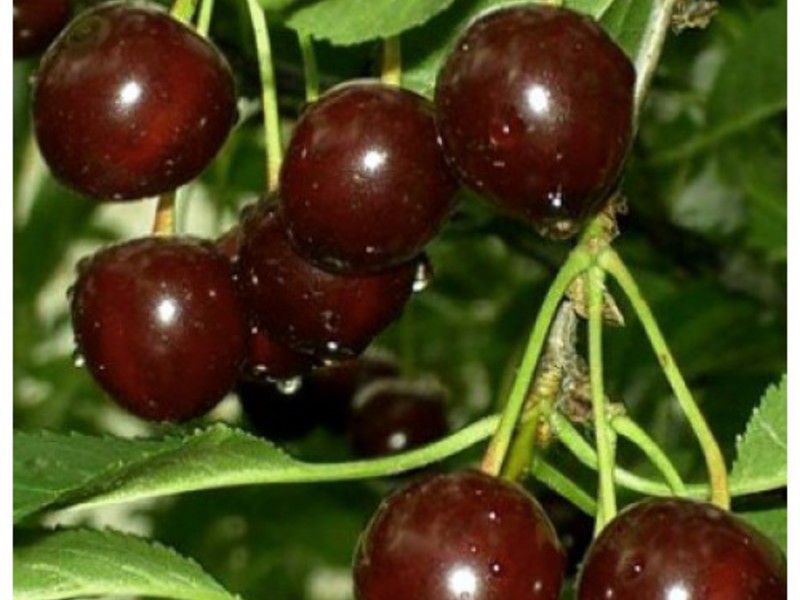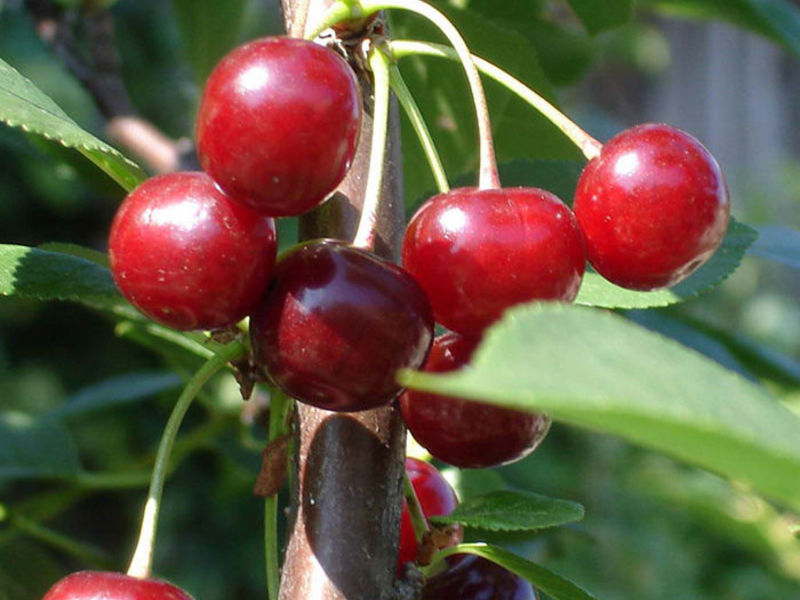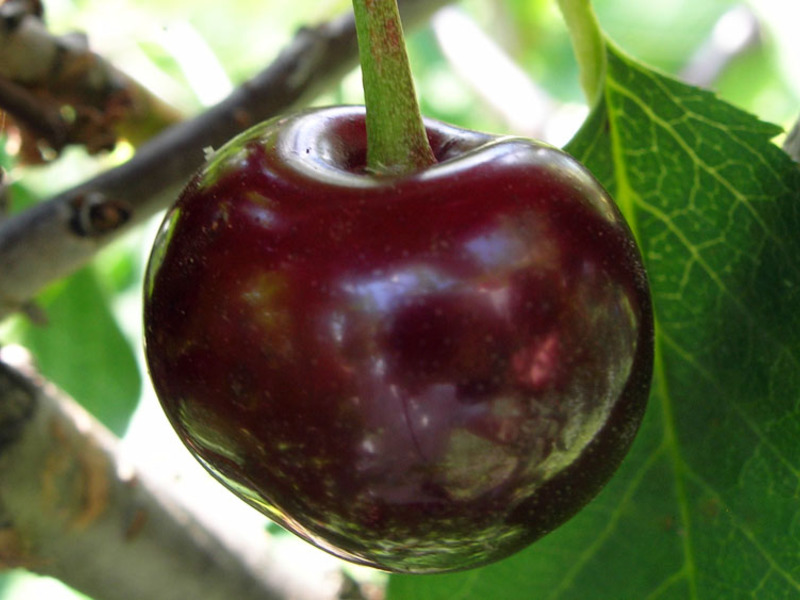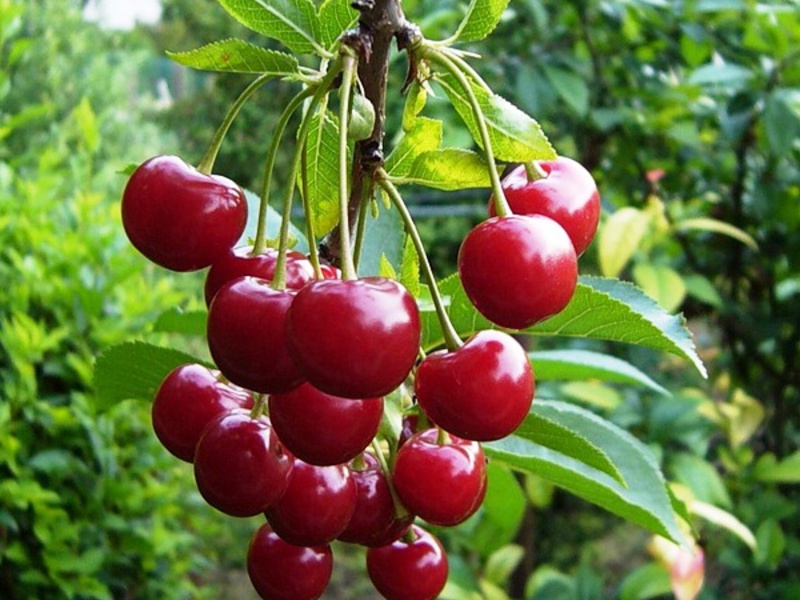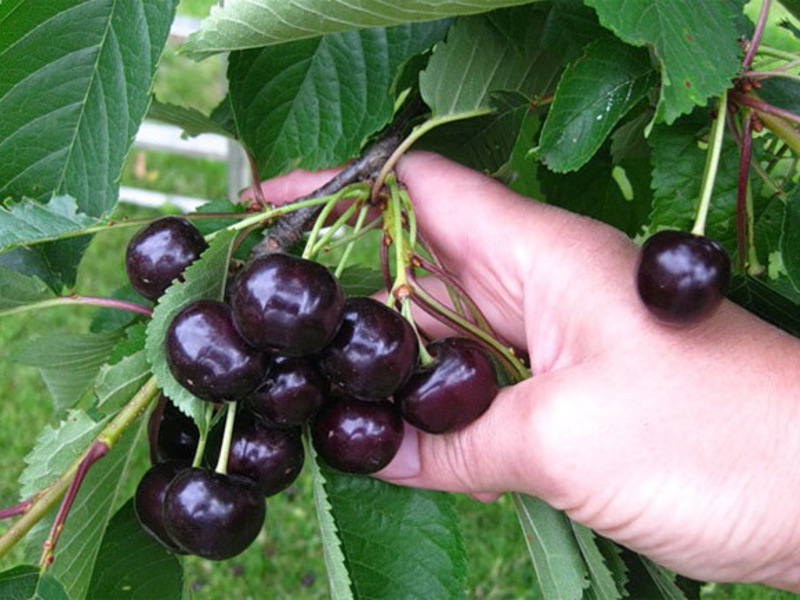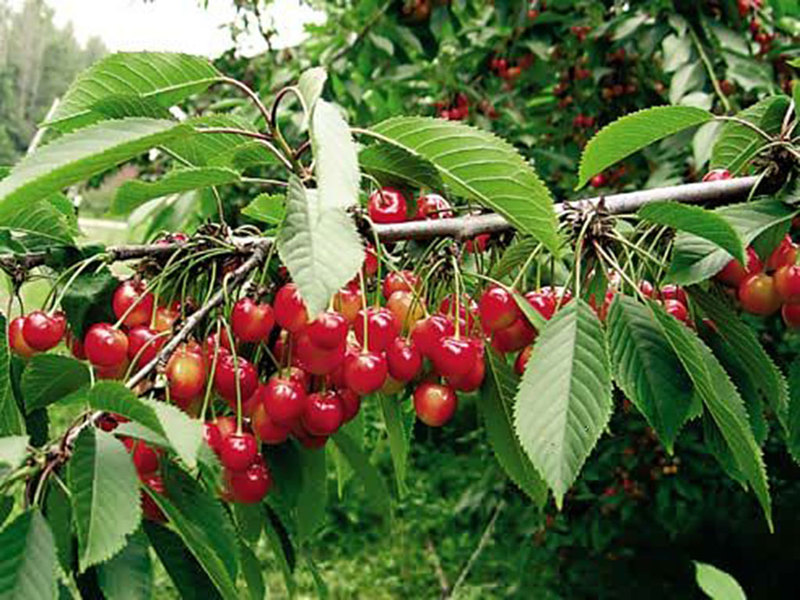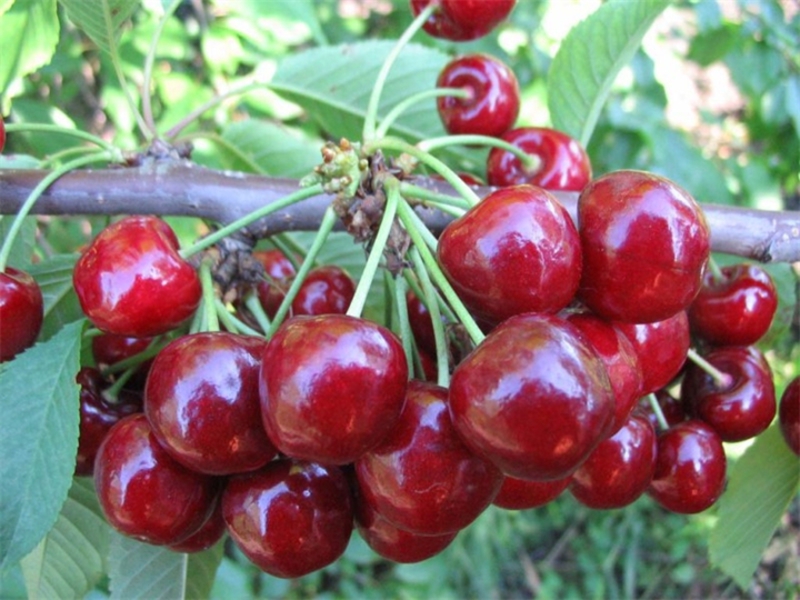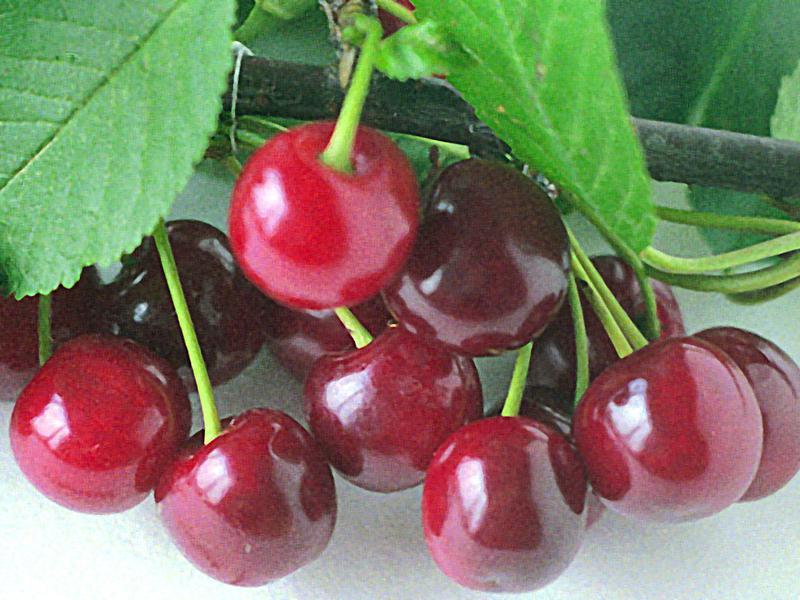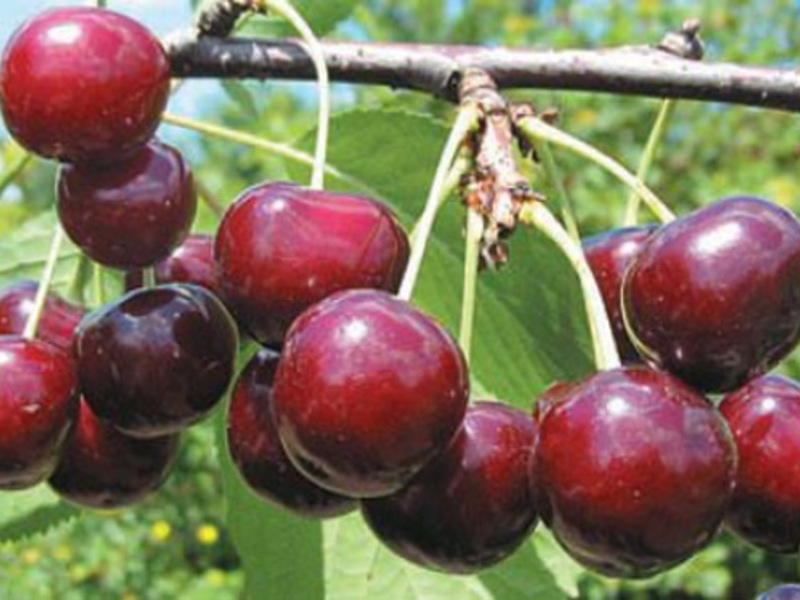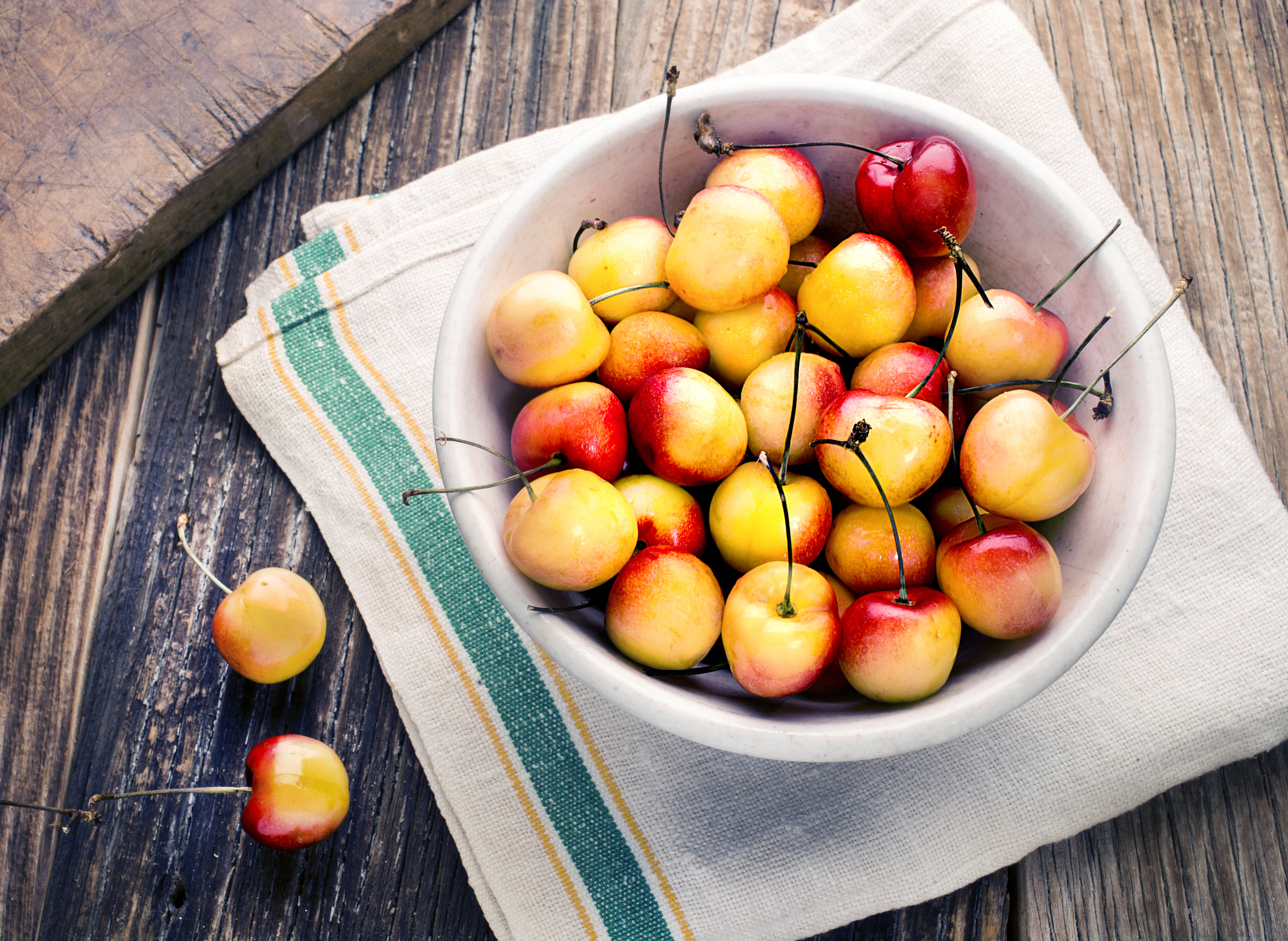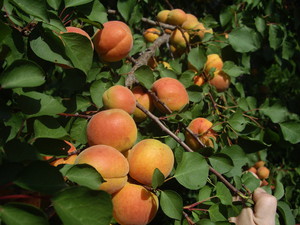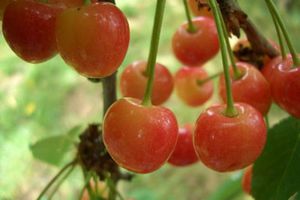 In many European countries, the words "cherry" and "cherry" have the same translation. And this is quite logical, since they are closely related. But even these bonds will not be able to transform sour cherries into sweet cherries. Over the years, breeders have been able to develop a large number of different varieties of sweet cherries for planting in the Moscow region and other northern regions.
In many European countries, the words "cherry" and "cherry" have the same translation. And this is quite logical, since they are closely related. But even these bonds will not be able to transform sour cherries into sweet cherries. Over the years, breeders have been able to develop a large number of different varieties of sweet cherries for planting in the Moscow region and other northern regions.
Content
The best varieties of cherries for the Moscow region: description
For growing cherries fertile land requiredas well as a sufficient amount of sunlight. But the cold Moscow regions are poorly suited for it, because breeders have created new frost-resistant varieties. The most popular are: Iput, Revna, pink Bryansk, Tyutchevka, Fatezh.
Pink Bryansk cherry
The berries of this cherry variety are medium in diameter 21-23 mm, and weigh 5-7 grams. The color of the fruit is pink and the pulp is yellow. Inside there is a brown stone, weighing 8-9% of the total weight of the cherry. The taste of the berries is juicy and sweet. The thickness and length of the peduncle are average.
Bryansk cherry has a late ripening time. Fruiting occurs at about 5 years after planting. It is a self-fertile tree, therefore it requires additional pollination. Cherry blossoms begin in early May. The berries ripen at the end of June. Productivity reaches about 79 C / ha, but it can be more.
Bryansk cherry of small stature, about 2.1-2.7 m, has an average density of branches, leaves are large and green. In the inflorescence there are up to three small flowers, the stigma and pistil are at the same level, the calyx is in the form of a glass, the sepals are not serrated. Shoots of sweet cherry brown with a grayish bloom.
This type of sweet cherry has one drawback: the impossibility of self-pollination. But this is not very scary, since there are other trees that pollinate cherries, they are the following varieties: Revna, Tyutchevka, Iput. The advantages of Bryansk cherries include:
- The fruits do not crack in rainy weather.
- The tree is resistant to fungal infections inherent in this variety.
- Excellent frost tolerance.
- Well transported over long distances.
- Rot practically does not affect the fruit.
Variety Iput
 The berries of this cherry variety weigh approximately 5-5.7 grams. The shape of the fruit is round, with a diameter of about 21-23 mm. The color of the berries is burgundy, and when fully ripe is almost black.
The berries of this cherry variety weigh approximately 5-5.7 grams. The shape of the fruit is round, with a diameter of about 21-23 mm. The color of the berries is burgundy, and when fully ripe is almost black.
It has a small and thick stalk. A bone weighing about 0.4 g, a bright brown shade, leaves the pulp quite well. The berries are delicious, juicy and beautiful.
This cherry variety is early. Begins to bear fruit in about 5 years. Like the above-described species, it is self-fertile, therefore additional tree species are required for pollination. Flowering occurs quite early. Full ripening takes place in early May. The berry yield is about 85 C / ha, and in some years it can reach 150 C / ha.
The Iput variety is rather high, about 3.7-4.2 m. The crown of this culture is quite dense, has many leaves in the shape of a pyramid. The elongated dark green sheets are double serrated. The inflorescence contains up to 4 white flowers.The pistils and stamens are at the same level.
The disadvantages of this variety, as well as the above-described type of tree, include the impossibility of self-pollination, which requires additional pollinators.
The main advantages of the Iput variety are:
- Excellent resistance to fungal infections.
- Well transported.
- Frost resistant.
- The buds of this variety also tolerate spring frosts well.
- Produces moderate and good yield annually.
- The flesh of the fruit is quite dense.
- It is an early variety.
Fatezh variety
The height of this culture reaches no more than 3.5-4.5 m... The tree has a thin crown in the form of a ball, as well as spreading branches. The leaves are generally pointed and large, with a deep green hue with a slight sheen. The buds do not differ in shape from other varieties. The inflorescence has many white flowers.
This type of sweet cherry is considered medium early. Begins fruiting at about 5 years. It cannot pollinate on its own, therefore, additional trees are needed for pollination, blooming simultaneously with the cherry. For the best pollination, honey is often used.
The cherry blossoms are in early June. Full maturation occurs in July. The annual yield from one tree is about 60 kg, which is quite a lot.
Fruits are medium in size, weighing about 4.5-5.1 grams. One-dimensional, have a red-yellow tint. The pulp is quite juicy, it leaves the stone very well. The stone has a mass of 6-7% of the total weight of the berry. The taste of the fruit is more sweet and sour.
Disadvantages of the Fatezh variety:
- This type of sweet cherry does not tolerate the presence of weeds, therefore it is necessary to periodically clean the ground near the tree.
- Strong wind does not tolerate well.
- There is no ability to self-pollinate, which requires other trees that bloom at the same time with him.
To the benefits of this variety include such features:
- This fruit crop is considered a high-yielding variety.
- Fast ripening of berries.
- Excellent frost resistance.
- This tree is resistant to diseases such as cocomycosis and moniliosis.
- Doesn't need frequent watering.
- Fatezh varieties will be an excellent decoration for your personal plot.
- Sweet cherry has a beautiful presentation.
Variety Tyutchevka
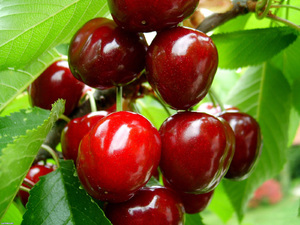 This variety has a thin rounded crown. The kidneys are of medium size, cone-shaped. Semi-oval at the bottom and pointed at the top of the leaves have bright green shade with a rough surface... Petioles are small and thick, with pigmented veins. The tree of this variety is of medium height.
This variety has a thin rounded crown. The kidneys are of medium size, cone-shaped. Semi-oval at the bottom and pointed at the top of the leaves have bright green shade with a rough surface... Petioles are small and thick, with pigmented veins. The tree of this variety is of medium height.
In a separate inflorescence, during blooming, four flowers are located, the corolla is in the form of a saucer, the petals are in contact with each other, the anthers are at the same height, the cup is in the form of a glass, the sepals have no sharpness. The stamens and pistil are the same size.
The berry weighs approximately 5.3-7.4 grams, with a diameter of approximately 21-24 mm, has a broadly rounded shape. Differs in a burgundy or dark red shade with small dots. Has a thick, small fruit stem... The stone, pointed upwards, has a mass of approximately 0.33-0.34 grams, a bright brown shade. It leaves the pulp well. The flesh itself is red with good firmness. The fruits are quite juicy, tasty and beautiful.
This variety blooms rather late, respectively, and the berries ripen as well. Fruiting of the tree begins approximately 5 years after planting. The yield is quite large, about 100 C / ha, and in a favorable year it can be 300 C / ha. This variety is self-pollinated.
There are no obvious drawbacks to this cherry variety, in addition to the fact that the fruits can crack in very humid weather, but this does not always happen, which has a great effect on this type of cherry and is liked by many summer residents.
The advantages of the Tyutchevka variety:
- Resistant to many diseases.
- The berries have excellent transportability, which makes it possible to transport them over long distances.
- It is a high-yielding cherry species.
- This variety is self-fertile, which has a positive effect on yield, but if additional pollinators are found, this will only increase the number of berries.
- Frost resistant.
- The berries are very juicy and tasty.
Revna variety
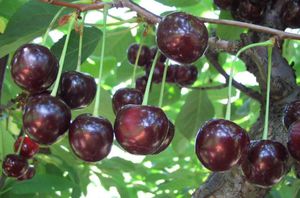 The berries of this tree, as a rule, are of medium size, there are no small or large, weighing about 4.5 grams. The shape of the fruit is characterized by a wide funnel with a rounded top. The color of the berries is burgundy, and when fully ripe, it is almost black. The pulp is rich red, rather dense. It has a medium-sized stem. The stone leaves the pulp quite well, has a bright brown tint. The fruits are quite juicy and tasty.
The berries of this tree, as a rule, are of medium size, there are no small or large, weighing about 4.5 grams. The shape of the fruit is characterized by a wide funnel with a rounded top. The color of the berries is burgundy, and when fully ripe, it is almost black. The pulp is rich red, rather dense. It has a medium-sized stem. The stone leaves the pulp quite well, has a bright brown tint. The fruits are quite juicy and tasty.
This tree begins to bear fruit about 5 years after planting. It begins to bloom in late May, but the fruits ripen quite late, in early July.
This variety is self-pollinating, but additional trees for pollination, such as some cherry or Iput cherry varieties, will only improve yields. The largest yield is about 120 C / ha, but on average about 70 C / ha.
This variety grows rather quickly, has an average height, the crown is not very lush in the form of a pyramid. All berries appear on the bouquet shoots of the tree. Oval leaves of a deep green hue, have a thick skin, petioles are small in size. In the inflorescence there are 4 flowers of a white shade, located freely among themselves. The stamens and pistils are the same size.
There are no obvious flaws to talk about.
To the advantages of the Revna variety the following applies:
- Sunburn is almost not reflected on this variety.
- Berries perfectly tolerate long-distance transportation.
- High quality berries in terms of appearance and taste.
- Typically, various fungal infections do not affect this tree.
- High frost resistance.
Features of planting cherries in the Moscow region
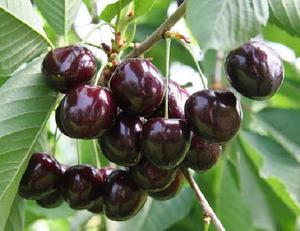 All varieties of cherries, absolutely without exception, love fertile soil and good sunlight. The soil on which it is undesirable to grow cherries, just like cherries, are sandstones and loams. The landing site must be selected windless. It is also required that on your personal plot there are already several types of cherries or cherries the same ripening time so that these crops can pollinate among themselves.
All varieties of cherries, absolutely without exception, love fertile soil and good sunlight. The soil on which it is undesirable to grow cherries, just like cherries, are sandstones and loams. The landing site must be selected windless. It is also required that on your personal plot there are already several types of cherries or cherries the same ripening time so that these crops can pollinate among themselves.
Planting cherries or cherries in the Moscow region should be carried out in the spring. To prepare the land for cultivation, one must not forget that the horizontal roots of any variety are at a depth of 35-85 cm, and the vertical roots go up to 2.5 meters. Therefore, the best option is to do the following: on the territory, instead of pits, carry out plantation plowing.
It is necessary to pour 1/3 into the hole made with a mixture of fertilizers and earth. Before disembarking, a column is attached to the bottom of the pit. Then a small mound is made in the center, a seedling is placed in it and fixed to a post, then a hole is added in, leaving about 6-6 cm above the ground level. At the end of planting, the ground is watered and mulched.
The optimal distance between trees should be about 4-6 m. It is advisable to make a large distance between them, otherwise then, already grown trees, will begin to shade each other.
How to care for cherries in the Moscow region:
- Any varieties of cherries, like cherries, do not treat weeds well, therefore it is necessary to periodically do cleaning activities near the trees.
- To protect the berries from birds, trees should be covered with a garden net.
- Trees are practically not susceptible to all kinds of fungal infection, but preventive measures are taken as a safety net: the use of sterile secateurs, competent pruning, spraying with various protective solutions, and annual easy digging of the earth.
- Cherries and cherries are rarely watered, as a rule, three times a year.
 Planting different types of plants between cherries protects them from frost in winter.Also, every autumn, it is necessary to wrap the trees with paper and add snow in winter so that the cherries do not freeze.
Planting different types of plants between cherries protects them from frost in winter.Also, every autumn, it is necessary to wrap the trees with paper and add snow in winter so that the cherries do not freeze.- For feeding cherries and cherries, as a rule, liquid manure is used in combination with fertilizers for fruit trees. But top dressing is not added under the very trunk, it is laid next to it.
- Every spring it is necessary to prune trees, remove broken, dry and diseased branches. It is also necessary to whitewash the trunks in autumn and spring.
In this article, we examined the best varieties of cherries for planting in the Moscow region and middle regions of Russia. Observing all the rules of planting and caring for trees, you can achieve a plentiful and good harvest of these juicy and tasty berries. Competent preparation for wintering, as well as insect protection and disease prevention will provide your backyard with healthy cherry trees for years to come. And by planting varieties that ripen at different times in your garden, you can provide yourself with delicious berries for the whole summer and prepare jam for the whole year.
